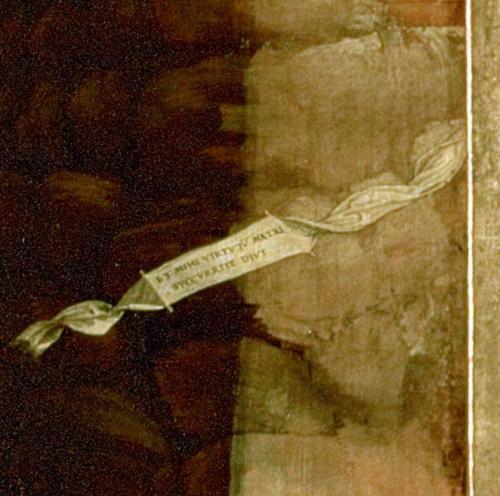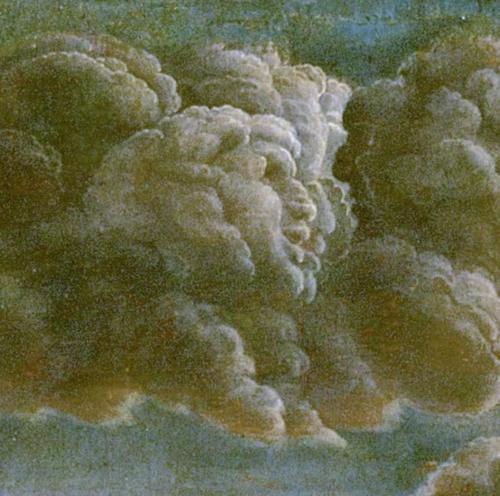mikeh wrote:Thanks for freeing up the terrain, Steve. The question at hand now is, what is the "mother of the virtues" or "mother of virtues" (given that there is no definite article in the Latin, per Marco's quote) in this particular painting by Mantegna, in which the "mother" is represented as imprisoned behind a wall at the far right. In that context, justice, fortitude, and temperance are ruled out, because they are clearly shown with their attributes in the clouds. What remains is either prudence or something other than the four cardinal virtues: sapientia, truth, or their combination seems to me the most likely, but others on Steve's list aren't ruled out. More information is needed, as much as possible related to the particularity of time and place of the paintings's execution. That's part of why I gave an engraving of 1477 and a painting (I think Lombard) of 1452.
Well ... :-) ... the thread is "Plato and Virtue(s) ... the specific picture of 1502 is a subordinated problem.
But why not: We have the inscription, as Ross once found out ...
Found the quote in Seznec "La survivance des dieux antiques", (Flammarion, 1993) p. 132, no. 1.
"1. Compare in Mantegna's painting the Virtues which observe the battle from on high; an inscription even speaks of the Mother of Virtues (Et mihi virtutum matri succurite divi) which according to Foerster would be Truth, invisible."
The literal translation would be "And to me, the Mother of Virtues, run with assistance, O Divine Ones!".
R. Foerster's reference is from "Jahrbuch der preussischen Kunstsammlungen", vol. 22, 1901-1902, p. 480.
So we have several interpretations of the inscription now - Truth, Discretion, or Prudence (as a synonym for Discretion).
http://tarotforum.net/showpost.php?p=922583#75
(6 years ago)
"And to me, the
Mother of Virtues, run with assistance, O Divine Ones!"
There are a lot of other inscriptions .... I don't know, what they say, actually one should know them. Some are readable. The figures in the pond are anti-virtues, in other words: vices.
But here are some more inscriptions:
http://wtfarthistory.com/post/813006713 ... -over-vice
The quote
ET MIHI MATER VIRTUTUM SUCCURRITE DIVI
is translated to
"Gods, save me too, the Mother of the Virtues"
... in the interpretation the mother of virtues is enclosed in a stone prison. Which somehow is rather different to the other suggestion.
The tree inscription says:
AGITE, PELLITE SEDIBUS NOSTRIS / FOEDA HAEC VICIORUM MONSTRA / VIRTUTUM COELITUS AD NOS REDEUNTIUM / DIVAE COMITES
Come, divine companions of the Virtues who are returning to us from Heaven, expel these foul monsters of Vices from our seats.
... and there are others. Well, I don't care in the moment.
The mother of the virtues shall be, where the inscriptions is ... so the opinion. Alright. Here are faces in the clouds:
To the left we've a "wooden column" (actually a tree, which has a woman figure) and it's considered, that it is Daphne, but it is assumed to be an olive, and that's said to be a sign of peace. Nonetheless the wooden lady seem to declare war on the vices (inscription says so).
Well, if there are clouds with faces above and a wooden lady at the left, a lady in the stone isn't such a big surprise at the right.
Is this a figure? I see a face in it and the face is ugly, but if I see the face, I see also (with goodwill) the indication of a figure. the feet are split near the head of the person. It's rather unbelievable to accept, that here is something, if you don't see anything, don't worry. But if there are pointers in the picture, which say, that there is something, I would see it.
Now it's the year 1502, and in Florence Michelangelo is at the operation "David" between 1501-1504. This was connected to a debate, that figures in stone (3-dimensional) are more worthy than 2-dimensional pictures (I've this from a literary biography of Michelangelo), and that the sculptor might have higher value than the painter (at least in Micheangelo's view, but not in the opinion of painters, which considered this work as "dusty" and "dirty" ... with some right). Mantegna btw. was a painter ... so perhaps not interested to make the figure very beautiful.
But ... Alberti made the figure of Memory to the guardian of Aletheia (Truth, mother of Virtue) and the Memory figure is described as ugly. in the theater play Philodoxus.
Well, one shouldn't forget about the possibility, that painters occasionally made jokes. .... :-) ... similar to researchers.











